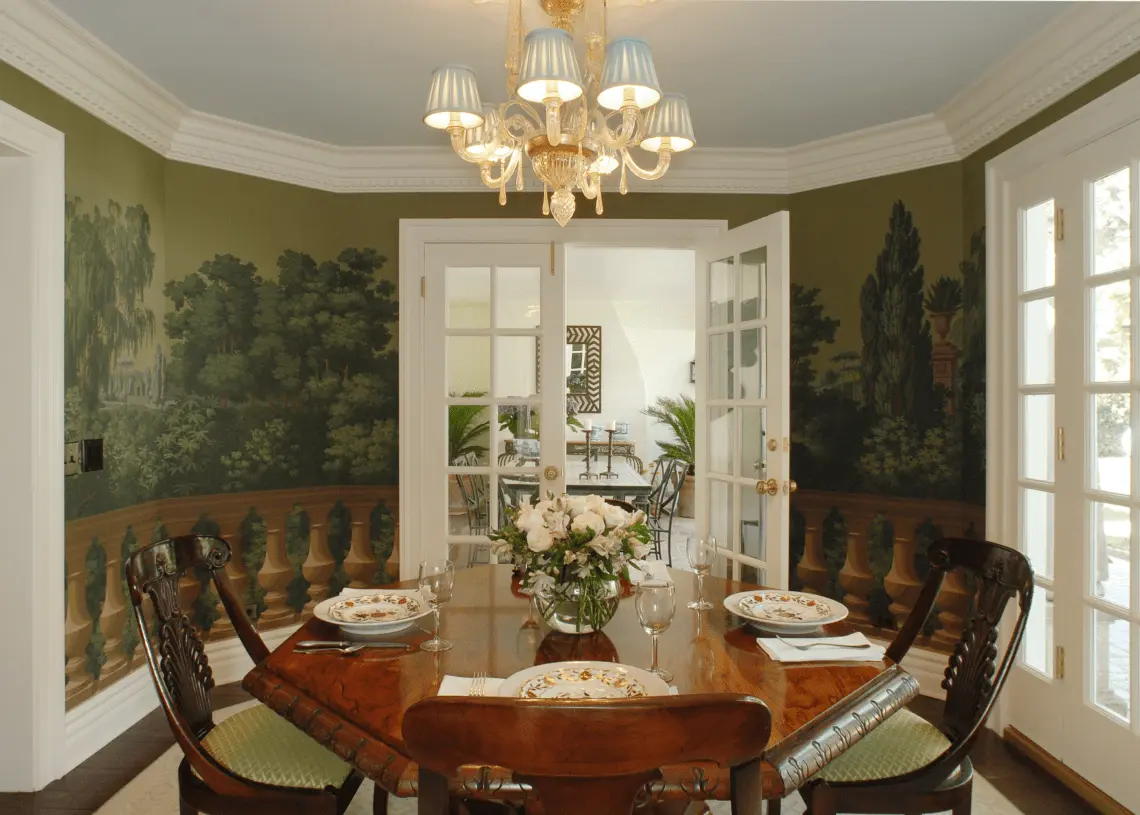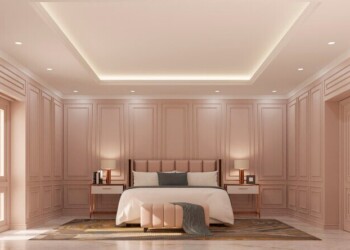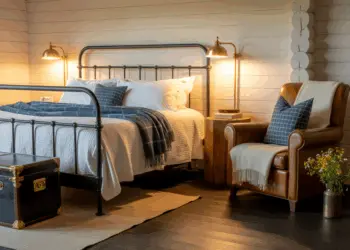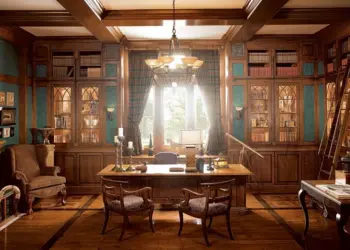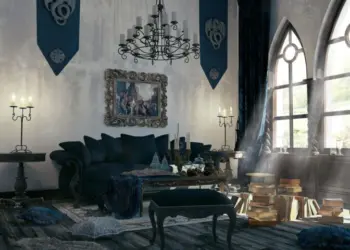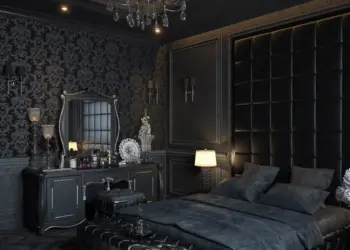Georgian Colonial interior design is a timeless style that exudes sophistication and classic charm. Rooted in the 18th century, this design aesthetic draws inspiration from the reigns of the four King Georges of Britain. It’s characterized by a harmonious blend of symmetry, proportion, and refined details. In this article, we will delve into the world of Georgian Colonial interior design, exploring its key features, color palettes, furniture, and how to incorporate this elegant style into your home.
Table of Contents
The Historical Roots Of Georgian Colonial Interior Design
Georgian Colonial design takes its name from the British monarchs of the House of Hanover, who ruled from 1714 to 1830. This era is divided into three periods:
Early Georgian
The Early Georgian period, from 1714 to 1760, was marked by simplicity and refinement. Interiors featured restrained ornamentation, with a focus on symmetry.
Mid Georgian
The Mid Georgian period, spanning from 1760 to 1790, saw a transition towards more ornate and neoclassical influences. This era brought about the popularity of Adam and Hepplewhite furniture.
Late Georgian
The Late Georgian period, extending from 1790 to 1830, embraced the Regency style. It was characterized by opulence, dark woods, and dramatic textiles.
Key Features of Georgian Colonial Interior Design
Georgian Colonial interior design is renowned for its distinctive features:
Symmetry and Balance in Georgian Colonial Interior
Symmetry is a fundamental element in Georgian interiors. Rooms are often centered around a focal point, like a fireplace, with matching furniture and decor on either side.
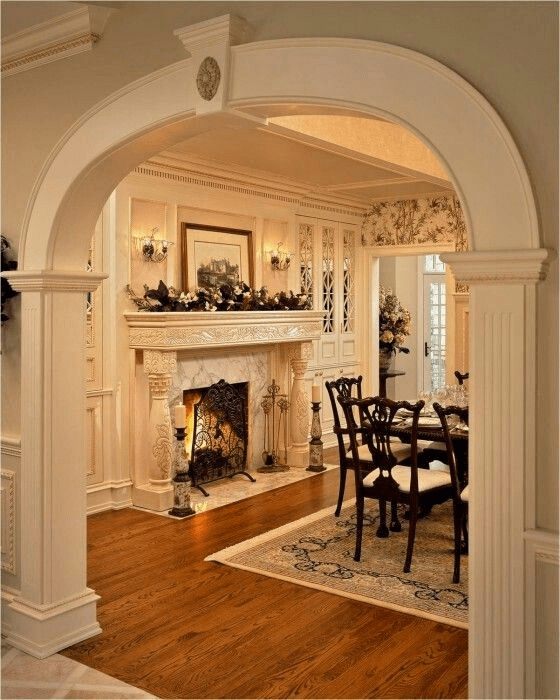
Architectural Details of Georgian Colonial Interior
Elaborate crown moldings, wainscoting, and intricate ceiling designs are common architectural elements that add depth and character to Georgian interiors.
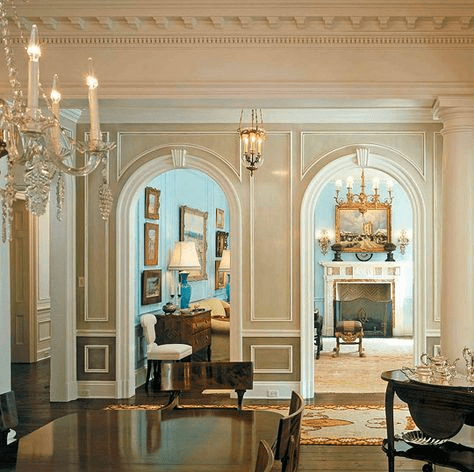
Georgian Colonial Interior Color Schemes
The Georgian Colonial architectural style, which originated in the early 18th century, is renowned for its timeless elegance and symmetry. This design era, characterized by its adherence to classical principles, produced some of the most iconic and enduring color schemes in the world of architecture and interior design. we will delve into the captivating color palettes that define Georgian Colonial aesthetics.
Neoclassical Whites
One of the defining features of Georgian Colonial homes is the use of crisp, bright whites. This color was not only a symbol of purity but also a way to showcase the architectural details. Interior and exterior walls were often painted in shades like “Georgian White” or “Creamy Ivory.” This clean canvas allowed the focus to shift to intricate moldings, millwork, and elegant furniture.
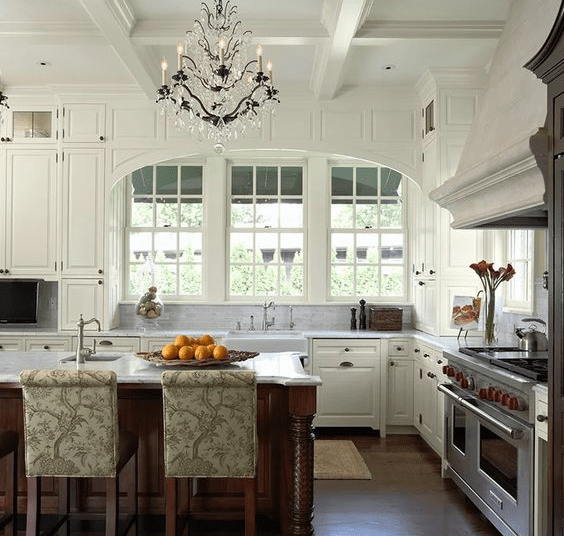
Stately Grays
Gray was another favored color during the Georgian era. Soft, muted grays such as “Georgian Gray” and “London Fog” were often used for exterior details like shutters and doors. These subtle grays provided a sophisticated contrast to the white facades and added depth to the overall design.
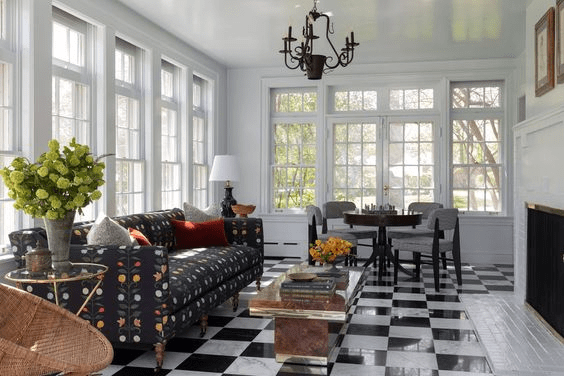
Regal Blues
Deep, rich blues were frequently employed in Georgian Colonial interiors. Shades like “Navy Blue” or “Royal Blue” were used for upholstery, curtains, and even wall paneling. These blues conveyed a sense of regal opulence and complemented the period’s fascination with Greek and Roman motifs.
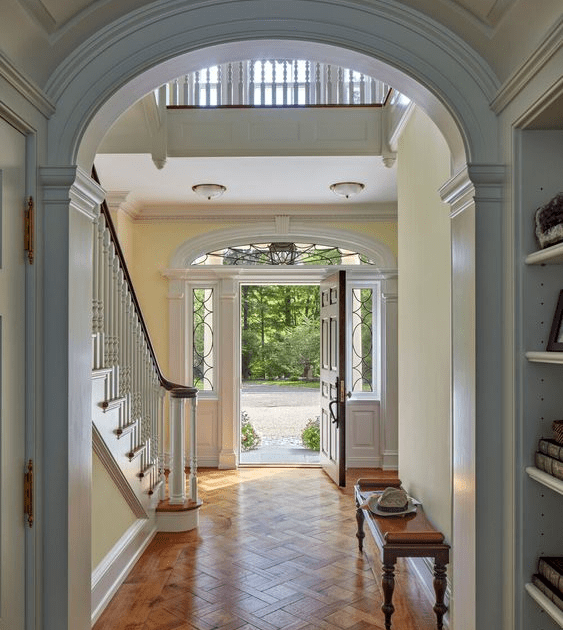
Earthy Greens
To connect with the natural surroundings, Georgian Colonial homes often featured earthy green tones. “Sage Green” and “Olive Green” were used for interior spaces and upholstery, bringing a sense of serenity and balance to the design. Green was also a nod to the English countryside.
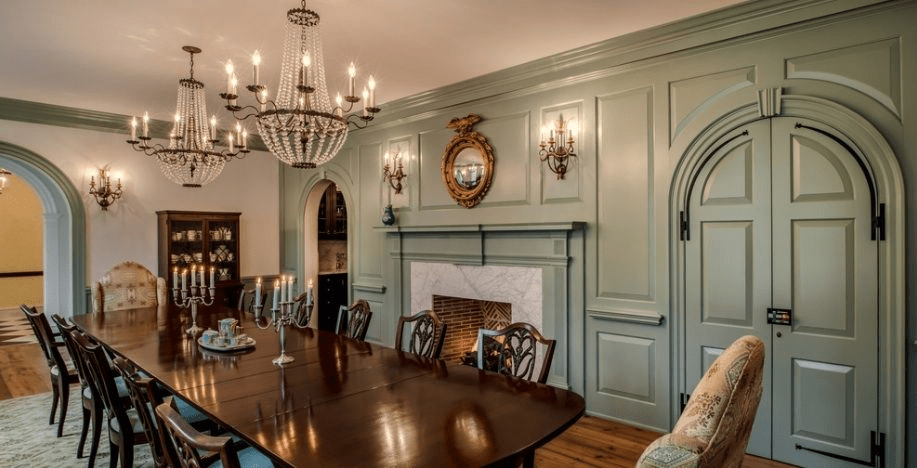
Warm Yellows
Yellow was a cheerful and uplifting color choice during the Georgian era. “Sunflower Yellow” or “Buttercream” were common shades for walls, creating a welcoming ambiance in both public and private spaces. These warm yellows also complemented the natural light that flowed through the large, symmetrical windows.
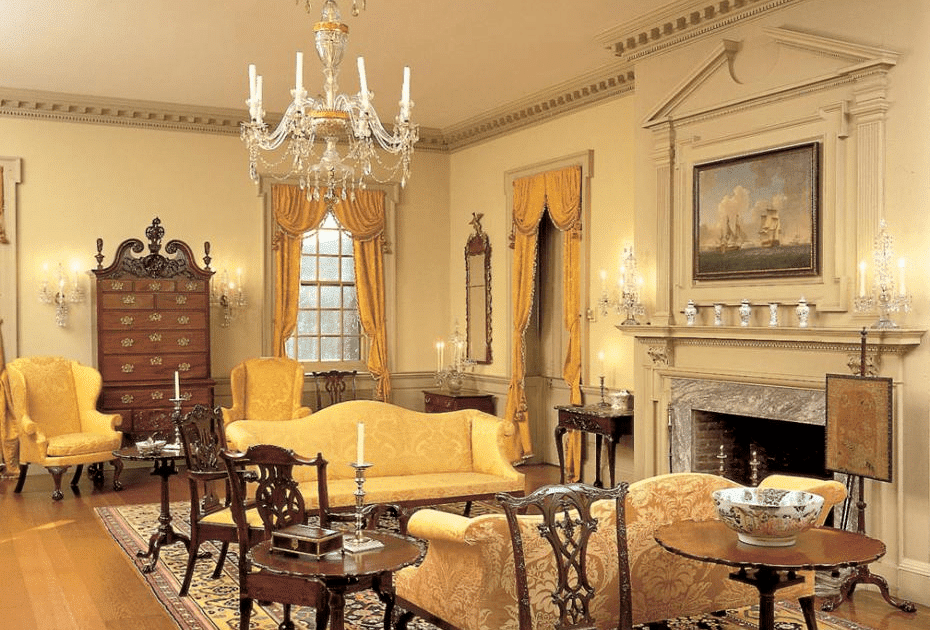
Rich Reds
Deep reds, like “Burgundy” or “Crimson,” added a touch of drama and sophistication to Georgian Colonial interiors. These colors were often seen in draperies, upholstery, and even on dining room walls. Red symbolized warmth, passion, and vitality in these grand homes.
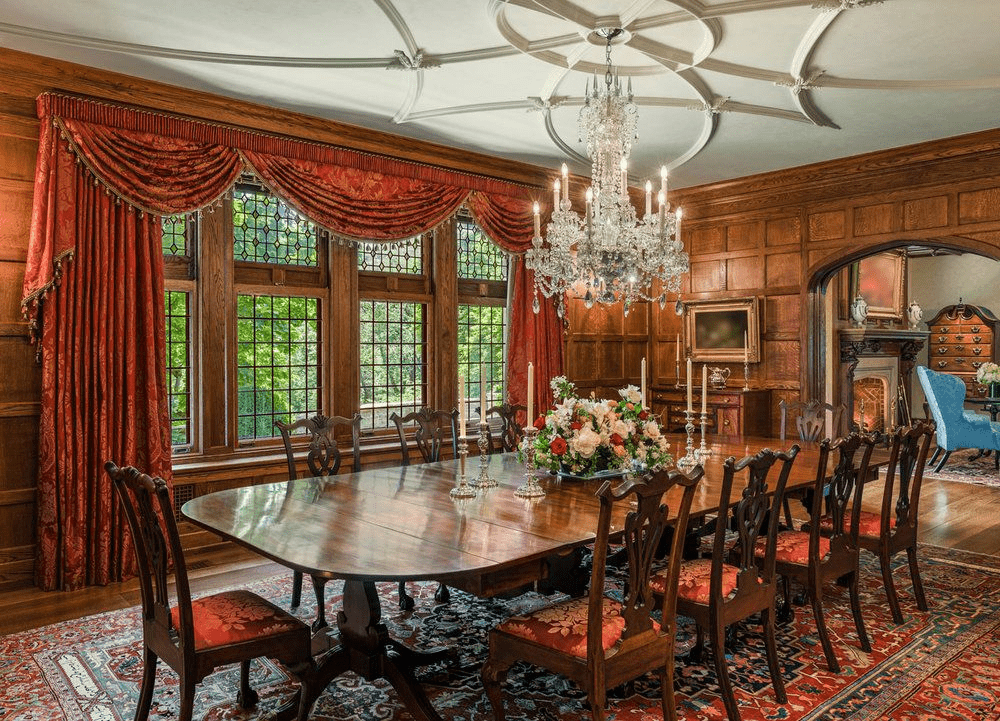
Elegant Blacks
Black was used sparingly but effectively in Georgian Colonial design. It was often seen in features like wrought iron railings, fireplace mantels, and furniture accents. Black added a touch of formality and contrast to the predominantly light color schemes.
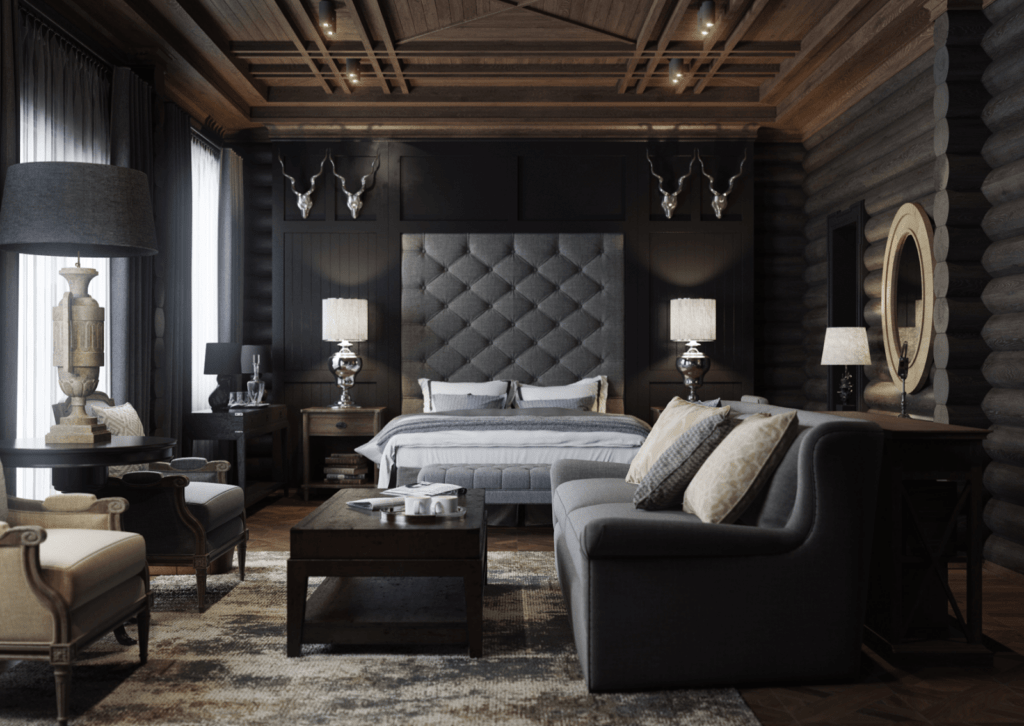
Gilded Gold
Georgian interiors were known for their opulence, and gilded gold accents were a staple. Gold leaf or metallic gold paint adorned picture frames, mirrors, and chandeliers. This lavish use of gold reflected the period’s fascination with all things luxurious and classical.
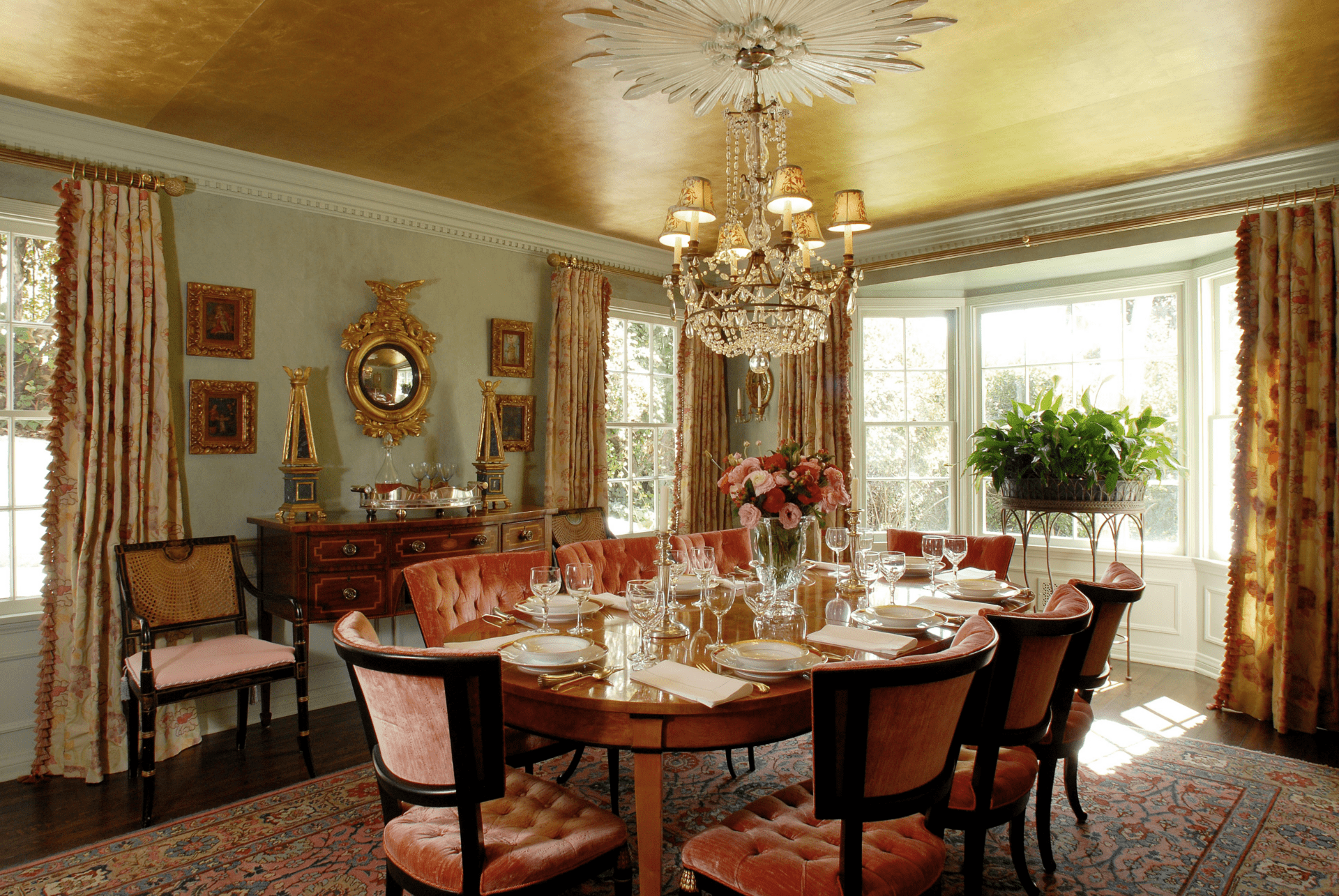
Classic Furniture in Georgian Colonial Interior
Furniture in Georgian interiors is known for its graceful lines and classical motifs. Pieces like Chippendale chairs and Sheraton tables are iconic examples.
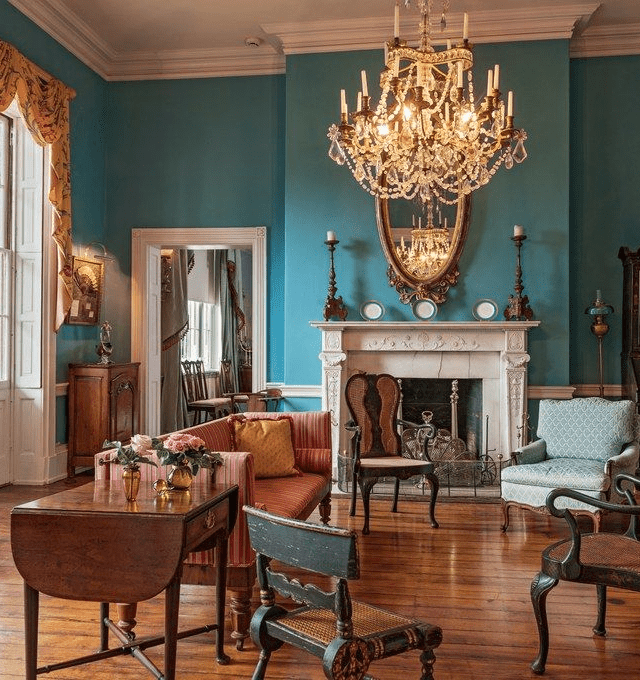
Fine Fabrics
Georgian interiors often feature rich textiles like silk, damask, and brocade. These fabrics adorn curtains, upholstery, and bedding, adding a touch of luxury.
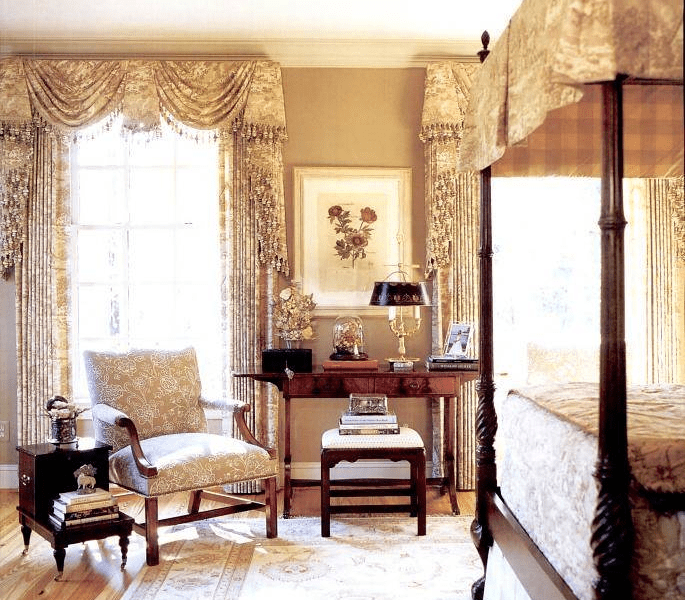
Incorporating Georgian Colonial Interior Design in Your Home
Now that we’ve explored the essence of Georgian Colonial interior design, let’s discuss how you can infuse this timeless elegance into your own home:
Choose Classic Furniture
Invest in furniture pieces that reflect the era’s style. Look for cabriole legs, claw-and-ball feet, and intricate carving details.
Embrace Symmetry
Arrange your furniture symmetrically around a central point. This balance will create a visually pleasing and harmonious space.
Architectural Enhancements
Consider adding architectural elements like crown moldings, chair railings, and decorative ceiling medallions to evoke the Georgian aesthetic.
Elegant Lighting
Select chandeliers and sconces that feature crystal or glass accents, as they align with the opulence of Georgian design.
Accessorize Thoughtfully
Use period-appropriate accessories such as porcelain vases, gilded mirrors, and antique clocks to enhance the authenticity of your Georgian interior.
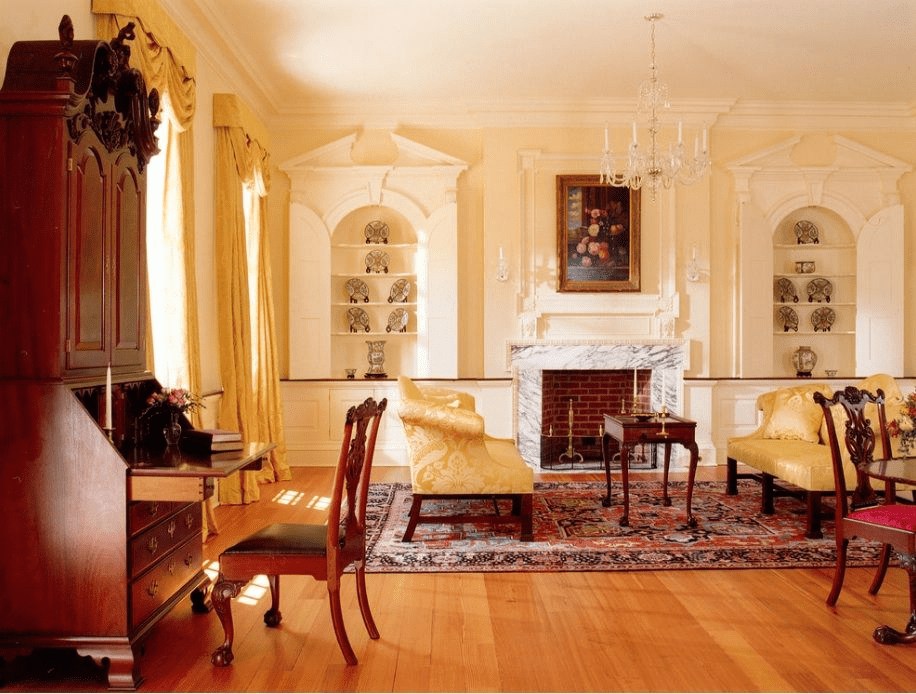
Landscaping Ideas for Georgian Colonial Interior Homes
Georgian Colonial homes, known for their classical symmetry and graceful proportions, are often graced by equally elegant landscaping. To harmonize with the architectural charm of these homes, it’s essential to select landscaping elements and designs that enhance their stately appearance. Here are some landscaping ideas tailored to complement the grandeur of Georgian Colonial residences:
Formal Gardens
Georgian Colonial homes often feature symmetrical facades, making formal gardens an ideal choice for landscaping. Consider creating parterre gardens with neatly trimmed hedges, boxwood or yew, and geometric flowerbeds. These structured gardens mirror the balanced design of the house and provide a touch of timeless elegance.
Boxwood Hedges
Boxwood hedges are a classic choice for Georgian Colonial landscapes. They offer a crisp, evergreen backdrop that emphasizes the home’s symmetry. You can shape the hedges into neat geometric forms, such as squares or rectangles, to echo the architectural lines of the house.
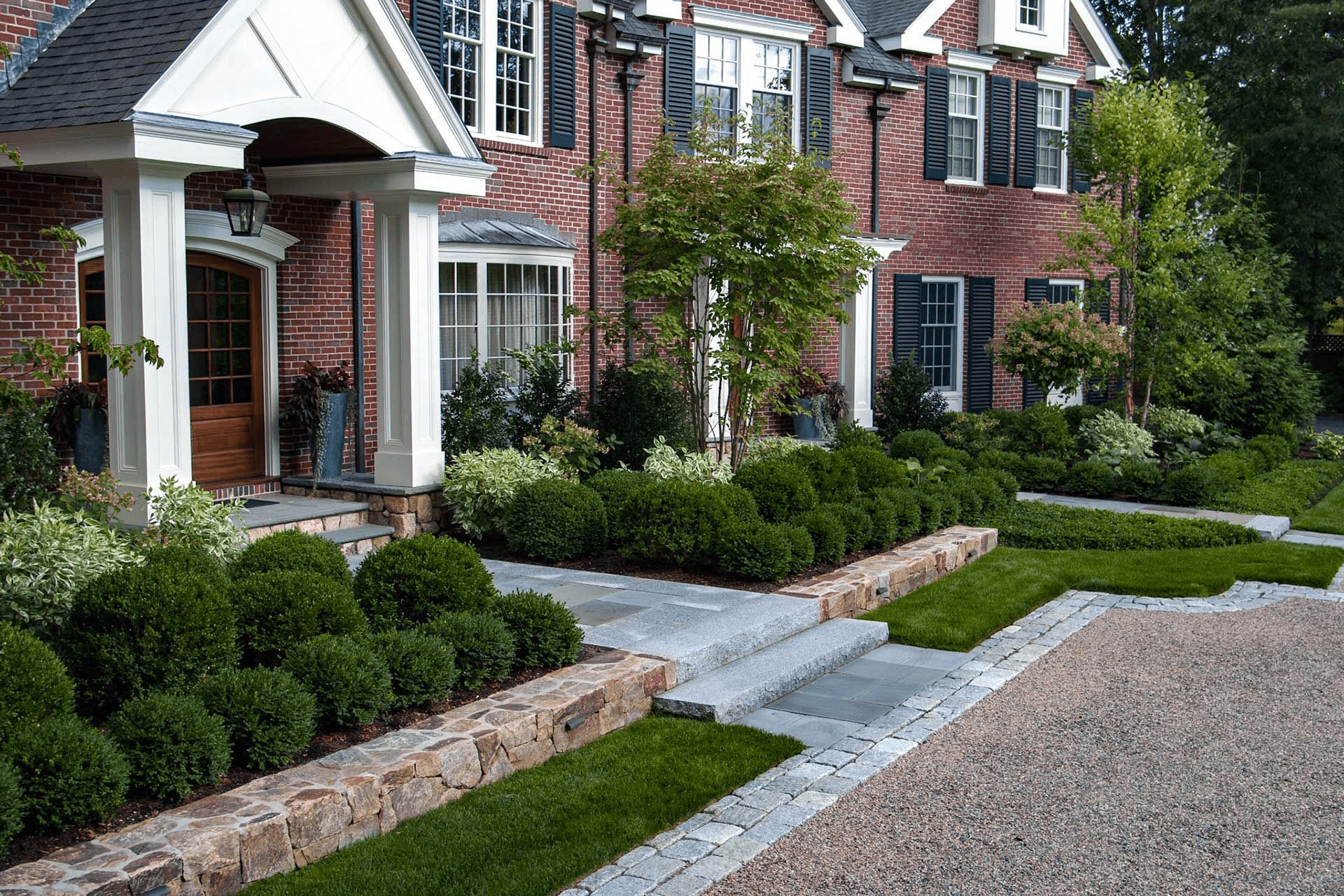
Circular Driveways
Circular driveways not only provide practicality but also enhance the grandeur of Georgian Colonial homes. Install a well-paved, circular driveway adorned with a central focal point, like a decorative fountain or a manicured topiary. This design welcomes guests with a sense of opulence and balance.
Symmetrical Planting Beds
Embrace the symmetry of Georgian architecture by creating symmetrical planting beds on either side of the entrance. Choose classic flowering plants like hydrangeas, roses, or peonies. These flowers add a burst of color while maintaining a formal and timeless appeal.
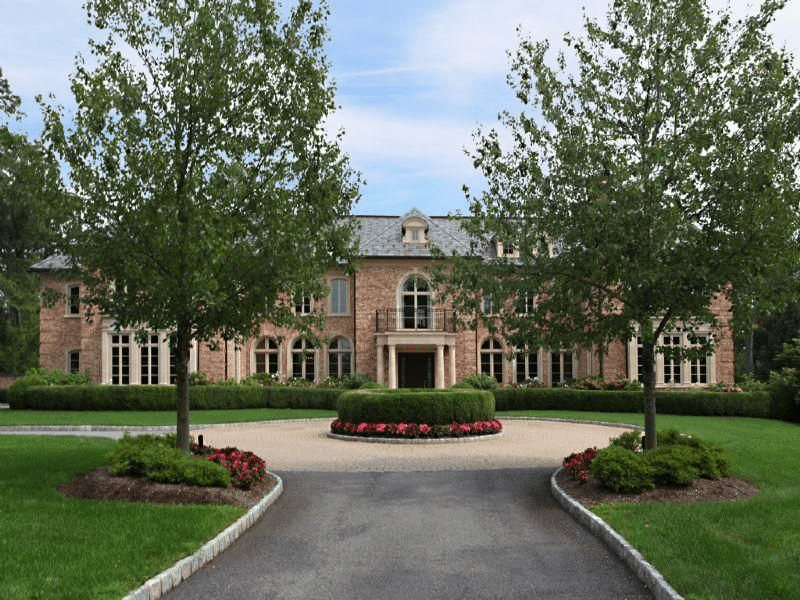
Graceful Walkways
Elegant walkways leading to the front entrance are a hallmark of Georgian Colonial landscaping. Use materials like brick or stone to create gracefully curved paths bordered by low hedges or flowerbeds. Lantern-style outdoor lighting can be added for a touch of sophistication.
Classic Statuary
Incorporate classical statuary or garden ornaments to evoke a sense of history and refinement. Statues of Greek or Roman figures, ornate urns, or classical columns can serve as captivating focal points within your landscaping.
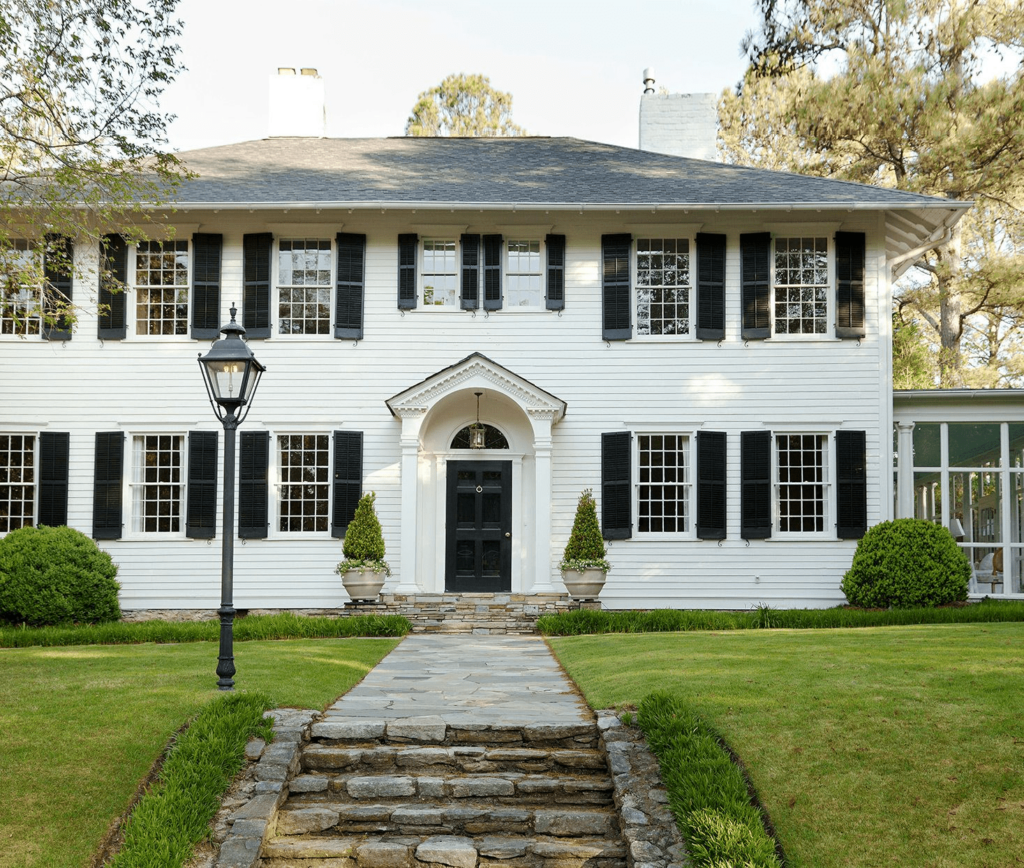
Mature Trees
Planting mature trees such as oak, maple, or elm can lend a sense of established grandeur to your property. Ensure they are strategically placed to frame the home without overshadowing its beauty. Well-pruned and maintained trees can provide shade and a touch of nature’s majesty.
Wrought Iron Fencing
Enclose your Georgian Colonial property with wrought iron fencing. The intricate patterns and classic design of wrought iron complement the architecture and add a layer of security and elegance to your landscape.
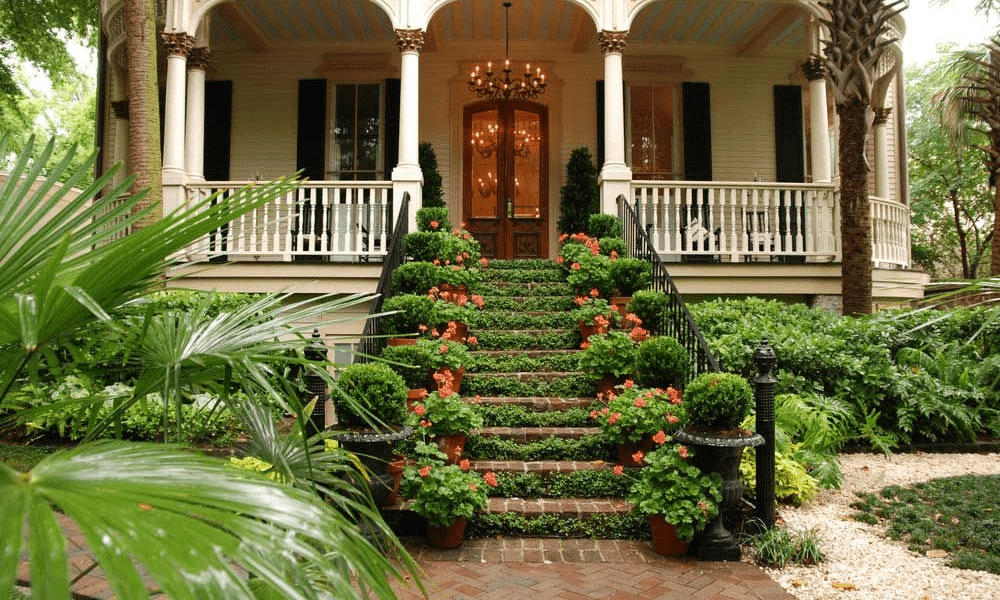
Water Features
Consider the addition of a water feature like a formal fountain or a tranquil pond. These features not only create a sense of serenity but also reflect the refinement of Georgian design.
Seasonal Planting
Rotate seasonal flowers and plants to maintain a fresh and inviting landscape throughout the year. Spring bulbs, summer blooms, and autumn foliage can bring dynamic colors and textures to your Georgian Colonial garden.
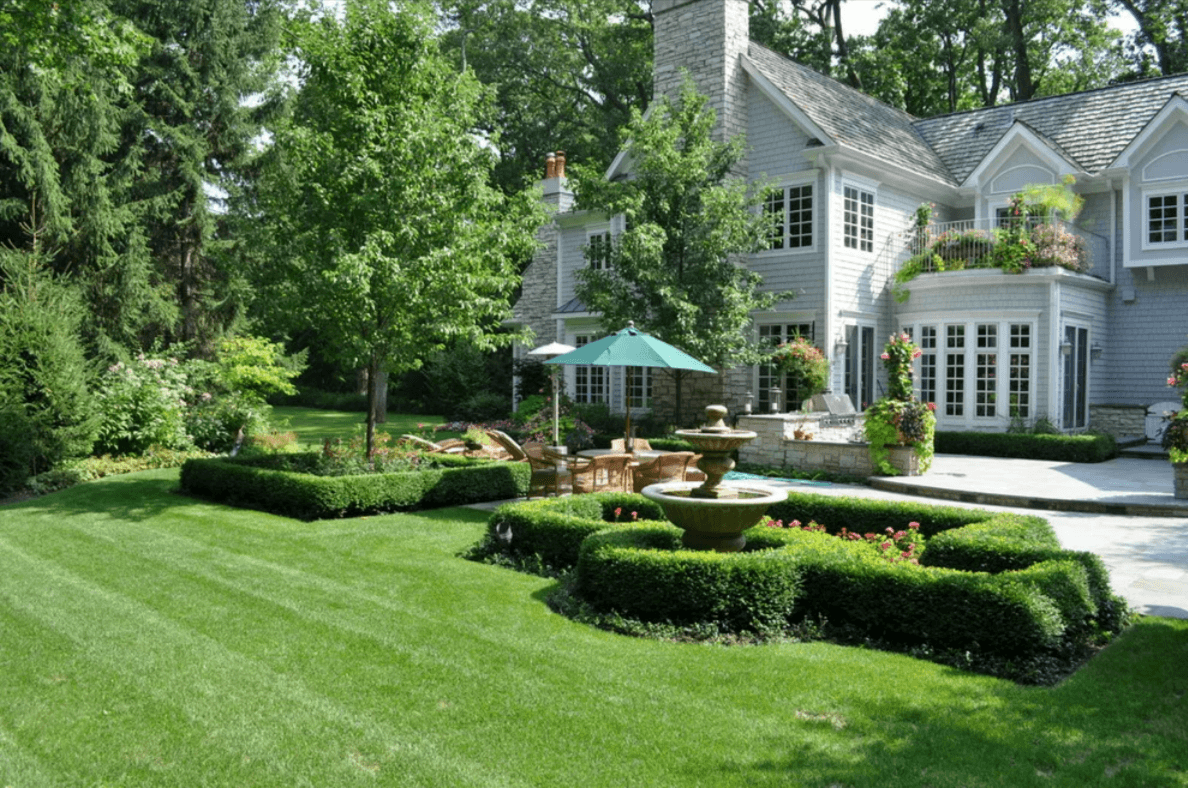
Georgian Colonial interior design offers a captivating journey into the past, where elegance and refinement were paramount. By incorporating the principles of symmetry, architectural details, and a muted color palette, you can transform your living space into a timeless haven of sophistication.
FAQs
Is Georgian Colonial Interior design suitable for modern homes?
Absolutely! You can adapt Georgian elements to complement contemporary spaces, creating a unique blend of classic and modern aesthetics.
What are the features of colonial interior design?
Colonial interior design often features simple and functional furniture, earthy color schemes, exposed wooden beams, and elements influenced by the specific colonial era, such as Early American, Spanish Colonial, or Dutch Colonial.
What are some affordable ways to incorporate Georgian design?
Consider using paint and moldings to mimic architectural details, and shop for Georgian-inspired furniture at thrift stores or online marketplaces.
Can I mix Georgian Colonial Interior design with other styles?
Yes, Georgian design can be seamlessly integrated with other styles, such as Scandinavian or industrial, to create a personalized and eclectic look.
Are there regional variations of Georgian Colonial Interior design?
Yes, there are regional variations, such as American Colonial and British Colonial, each with its own distinctive characteristics.
What is Georgian style interior design?
Georgian style interior design is a classic and elegant design style that originated during the reigns of the first four British monarchs named George. It emphasizes symmetry, proportion, and classical architectural elements.
Where can I find authentic Georgian Colonial Interior furniture and decor?
Antique shops, auctions, and specialized dealers are excellent sources for authentic Georgian pieces. Be sure to do your research and verify the authenticity of the items.
What are the key characteristics of Georgian interior design?
Characteristics include symmetry, formal furniture, use of moldings, rich color palettes, neoclassical motifs, and a sense of timeless elegance.
What makes a house Georgian Colonial?
A Georgian Colonial house is characterized by its symmetrical facade, typically with a centered front door, evenly spaced windows, brick or stone construction, and a gable roof.
